Beating the
Big Boys
at Bids
HOW TO CAPITALISE ON AN SME’S NATURAL ADVANTAGES
Are You A Small Player In A Competitive Arena, Going Up Against the Behemoths In Your Industry?
Competing with the ‘Big Boys’ Is Tough . . .
Operating as a Small or Medium-sized Enterprise (SME) – or a “Tier 2 or 3” – can be tough in its own right . . . especially when business development is just one of the many tasks on the plate of your much smaller team.
“Tough” takes on a whole new definition, though, when you have to, or want to, go from pitching to large corporate entities, to bidding against them.
Firstly, you’re almost certainly attempting to do so with a fraction of the big players’ available personnel, budget and other resources. Secondly, to be taken seriously, you have to not only be just as good at presenting your case, in fact you have must be better than them, if you’re too dislodge your well-known and long-entrenched competitors.
Adding to the pressure, you have an even greater need to get a result with any bids, tenders and proposals you submit. You simply can’t afford the luxury of putting time into costly productions that go nowhere.
But . . . the "tier ones" have universal weaknesses you can exploit with your own inherent strengths.
I’ll show you how.
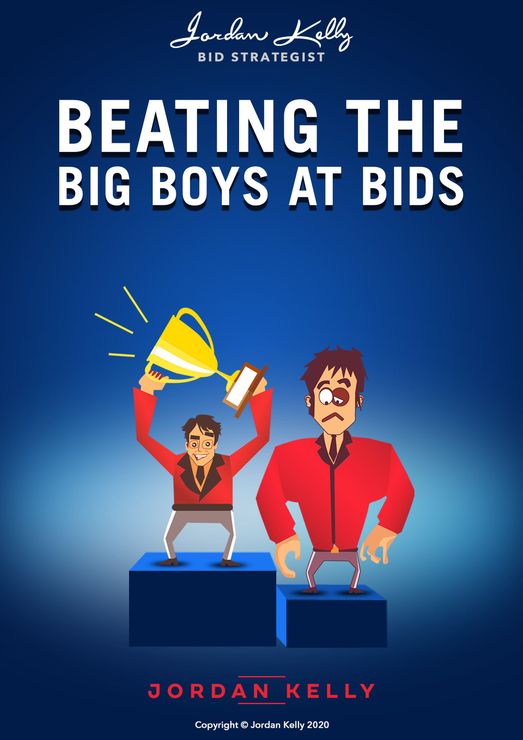

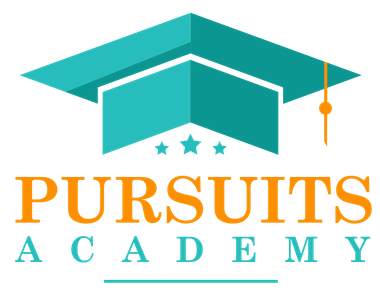
See Jordan’s profile, full list of services, client testimonials, books, courses, published columns, and numerous, regularly-updated free resources at her PURSUITS ACADEMY.
I’m
Jordan Kelly, Bid Strategist.
Since 2003, I’ve worked extensively both with “the big end of town” and with enterprises on the lower rungs of the (size/resources/profile) ladder.
Almost without exception, any smaller enterprises I’ve worked with have been on the cusp of breaking through to a whole new level of profile and profitability . . . if they could just clinch some new, mission-critical opportunity before them. And I’ve been able to guide them through processes to help them achieve that usually lofty objective.
How? Because I’ve seen the numerous and universal chinks in the armour of the large corporations, competitively speaking. Indeed, I continually see the many and multifaceted ways in which smart and motivated smaller operators can take multi-faceted advantage of their larger, less-nimble, less-flexible, and often self-destructively arrogant corporate competitors.
While continuing to service the “big names”, I also work – selectively – with invested, coachable smaller/”lower tier” organisations, helping them to identify, investigate, and become skilled at capitalising on the surprising number of inherent advantages of being one of the “small guys” in a specific bidding race or other type of pursuit.
Ideally, I’ll work simultaneously with the senior leadership team to bring a seasoned and skilled “reality check” to that enterprise’s industry positioning and marketplace profile. This ensures that, when I hand the reins back over at the conclusion of my work with them, I leave them with a greatly uplevelled in-house ability to recognise their most strategic competitive opportunities – and to exploit them to full advantage.
The Program
Beating the Big Boys At Bids
Customised Especially for Your Enterprise & Delivered by Jordan
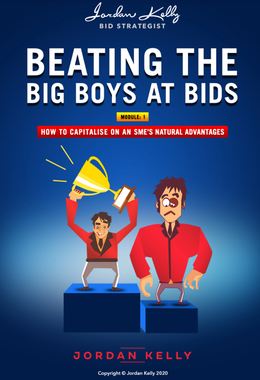
Module One
How To Capitalise On An SME’s Natural Advantages
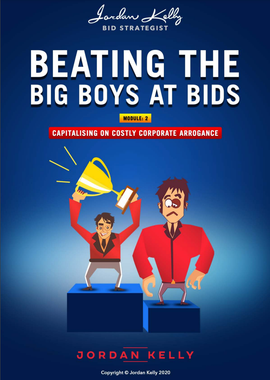
Module Two
Capitalising On Costly Corporate Arrogance
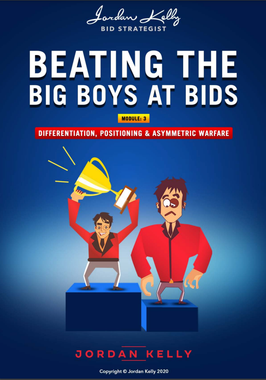
Module Three
Differentiation, Positioning & Asymmetric Warfare
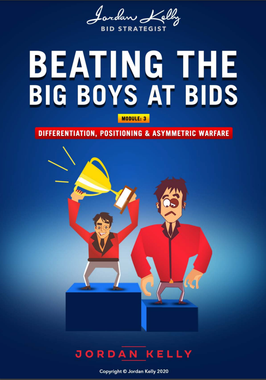
Module Four
Flexibility, Customisation & the Broader Definition of Value
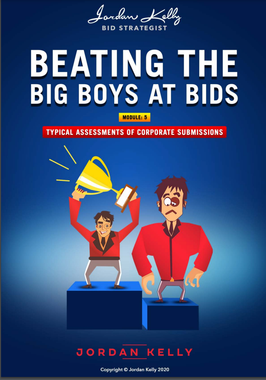
Module Five
Typical Assessments of Corporate Submissions
MY Approach Is Dictated by YOUR Needs
We can work together in real-time to clinch that mission-critical bid or pivotal pursuit.
Preferably, by way of ensuring a strategic foundation, we’ll also take the opportunity to optimise your overall industry positioning and market profile.
If you prefer to opt for a personalised training approach, I’ll customise the Beating the Big Boys At Bids program to meet your people exactly “where they’re at” — elevating their collective and individual skill sets from their current level of competence.

‘Our first Main Roads shortlisting in three years. Thanks, Jordan!’
Slide Title
Slide Title
Slide Title
Slide Title
‘We’ve just been shortlisted in our extremely specialised field.’
Slide Title
Slide Title
Slide Title
Slide Title
‘We are all thrilled here at the win with the New Zealand Defence Force. Again, our thanks, Jordan.’
Slide Title
Slide Title
Slide Title
‘She has a totally unique ability to walk into a company and, with her clever, incisive questioning, quickly identify its most relevant competitive strengths.’
title
titile
‘She’s sharp; sharp enough that I’m glad she’s working with us and not our competitors.’
Title
‘Her unique perspective was exactly what we were looking for.’
Title
‘The concepts Jordan teaches have become integral to the way we work and interact with our clients.’
TItle
‘ Thanks, Jordan, for what should become a pivotal moment in the history of our company.’
Title Title
‘It is amazing! You have managed to instil a deep-set change in the way we communicate with our customers.’
Titl
‘I’ve worked with Jordan for six years on many projects and am always surprised at the challenging briefs she is able to execute.’
Title
‘The learning we obtained from her involvement with us continues to be an asset to our operation.’
Title
Title
‘I have found hers to be a far more productive approach than the standard “methodologies” employed by so many consultants.’
Title
‘Every aspect of Jordan’s leadership of our bids was a learning experience in its own right. The residual value has been immense.’
Title
‘Not only did we win a very large bid crucial to our long-term growth, even better was the knowledge she left us with.’
Title
‘We called Jordan in because we were losing vital relationships with large corporate clients. She solved this by totally re-defining our value proposition.’
Title
‘The skills she teaches makes a huge difference in converting opportunities, and even creating opportunities in the first place.’
Title
‘Jordan is a natural-born teacher. Working with her has been an invaluable crash course in marketing and strategic thinking.’
Title
‘The training program she produced for us was well-organised, totally interactive and extremely challenging.’
Title
‘Her work is a combination of skilful facilitation and brilliant suggestions. Working with Jordan has been both illuminating and fun!’
Title
‘Her deliberately un-templated method opens up scope for more creative thinking and identifying superior angles for a successful bid.’
Title
‘A master strategist with a unique combination of experience and natural talent, she has the ability to distil a problem down to its essential elements and produce the perfect solution, every time.’
Title
'Completing our intense three-day program with Jordan has given me a totally new approach to understanding the client’s world.’
Title
‘Jordan helped me realise exactly what is unique about my business and how to present it in down-to-earth, crystal clear marketable language. She has a gift.’
Title
‘As a marketing strategist, writer and project manager, Jordan Kelly is second to none.’
Title
‘Jordan is a natural-born teacher. Working with her has been an invaluable crash course in marketing as well as strategic thinking.’
Title
Beating the Big Boys at Bids Blog
Deep Dives into Strategy & Tactics in Asymmetric Warfare

WHAT TOPICS WOULD YOU LIKE ME TO COVER?
Like to see me produce an advisory article on any specific topic?
Email your request through the contact form below.




THE CV STRATEGIST



Clients Say
'THE RESULTS OF JORDAN’S CV PROCESS & PRODUCTS EXCEEDED EXPECTATIONS AGAIN'
“I worked with Jordan in 2012 on a $100m tender and I recruited her again for a separate company’s tender in 2017.
“Jordan used strategic review and comprehensive interviewing techniques to extract key information from our senior nominated staff. In each case, this process provided a concise Curriculum Vitae script tailored specifically to the tender. It was thanks to these scripts that our people were best represented as the experienced face of the company, and as such were shortlisted in an extremely specialised field.
“The process Jordan employed was very involved, and the resulting work and subsequent results exceeded expectations.”
Tim Herlihy
Operations Manager
Contract Services Australasia Pty Ltd
'OUR FIRST MAIN ROADS SHORTLISTING IN 3 YEARS! THANKS, JORDAN.'
“Hi Jordan,
“Taking your recommendations we approached the bid from a new perspective and it has paid quick dividends.
“So thank you for your help and I look forward to applying the strategies from Think and Win Bids during the tender phase.”
Joseph-Paul Rossi
Business Development Manager
York Civil Pty Ltd
'A Well-Defined & Targeted Bid Strategy & Bid Writing Coaching Program'
“Jordan was engaged by Abigroup Contractors to independently review historical bids, suggest document improvements and enhance its pre-bid smarts.
“Through a well-defined and targeted coaching program, skilfully articulated by Jordan, our bid staff gained an invaluable appreciation of the strategic importance of well-researched proposals, in-depth questioning, and forming a deeper understanding of our clients’ value criteria.
“For those companies or individuals serious about the need for their staff to actually think and so improve the ‘non-cost’ and ‘quality elements’ of their relationship contract bid submissions, I recommend Jordan to you.”
Steve Abson
General Manager – Northern Region
Abigroup Contractors (Australia)
'Thrilled with Your Contribution' to Winning Defence Bid
“Jordan, thank you so very much.
“Your contribution to our winning bid was greatly appreciated. We are all thrilled here at the win with the New Zealand Defence Force.
“Again, our thanks.”
TelstraClear
New Zealand
JK Bid Critiquing 'Breaks Insular Group-Think'
“In the high stakes, ultra-competitive infrastructure services market, true insight and strategic excellence are invaluable in achieving success.
“Jordan practices what she preaches, and has the ability to provide an independent and insightful critique of the kind that can break the insular group-think that major bid teams can self-create.
“I can recommend Jordan as an advisor to teams looking to check and challenge themselves and their strategies for success before finding out the hard way.”
Rod Naylor
General Manager
Veolia Water North America (New York)
'Remarkable Talent As A Strategic Writer'
“Jordan Kelly recently provided guidance of extraordinarily high quality to Oracle in the planning and production of an important strategic communication project.
“Her sharpness of mind, objectivity and lateral thinking skills were the perfect resources to help us clarify and convey the competitive strengths of our solution.
“Consolidating the benefits of her facilitation skills is her remarkable talent as a strategic writer. This ensured we effectively communicated the superiority of the Oracle solution.”
Cheenu Srinivasan
Director – Planning & Operations
Oracle Corporation
' . . . Clever and Incisive Questioning . . . '
“Jordan Kelly has a totally unique ability to walk into a company and, with clever and incisive questioning, identify the smartest and most relevant competitive strengths on which to build its key marketing productions and sales documentation.
“She’s sharp; sharp enough that I’m glad she’s working with us and not our competitors.”
Building Industry
Marketing Manager
(Household Brand Name and Largest Player in its Sector) Sydney, Australia
'Her Bid Strategy Coaching Changed the Whole Way We Approach Clients'
“Our weekend workshop by Jordan Kelly helped me see the bid evaluation process from the client’s perspective. I now cringe when I look back on some of the bids and client communications I have sent in the past. Her unique perspective was exactly what I was looking for, for our sales and marketing team and all the participants were very impressed with both the content and the delivery.
“I can honestly say that the concepts that Jordan uses have already become part of the way we work and interact with our clients, not only in the realm of a bid, but also in day-to-day interactions. Whilst not for the faint-hearted, Jordan’s workshop lead us through the bid strategy formulation process in a way which completely changed the way we approach our clients. She does this, not by formulas or templates, but by a complete paradigm shift, which truly changes ingrained behaviours.
“Thanks, Jordan, for what should become a pivotal moment in the history of our company.
“PS: It is amazing! Even with general customer correspondence, you have managed to instil a deep-set change in the way I am communicating with my customers.”
Nicholas Dal Sasso
General Manager
Ecotech Pty Ltd (Environmental Monitoring)
'She Has A Great Coaching Style'
“The skill sets she teaches are highly relevant to our business. They can make a huge difference in converting opportunities into prospects, or even creating opportunities in the first place. She has a great coaching style, and whenever resistance arose she handled it well in my view.
“She also showed us how to weave some of her own magic through our writing, to create continuity, relevance and a compelling, readable style. I picked up some great ideas, techniques and principles in these sessions, which I’ll be putting into practice immediately.”
Alliance project manager and bid leader
Alliance Network International Pty Ltd
Queensland
'A Provocative, Challenging & Totally Dedicated Teacher'
“Jordan is a provocative, challenging and totally dedicated teacher. She is relentless in her pursuit of success on her client’s behalf. This is a very good thing for any organisation that wants to improve its proficiency in business-critical proposals and RFT responses.
“Jordan will accept nothing less than the best output in any area of performance, from preliminary research through to end-product, and the quality of her coaching in all of those areas is such that each member actually does achieve to the very best of their ability, which increases every time she works with us.”
Simon Ormes
Business Development Manager (North Queensland Division)
Abigroup Contractors
'Skilful Strategy Facilitation & First-Class Bid Writing'
“I’ve worked with Jordan for six years on many different projects and many different objectives, and I heartily endorse both her skills and her service levels.
“I am always surprised at the challenging briefs Jordan is able to execute. She can take a market sector or subject area that is completely unfamiliar to her and generate smart, insightful and implementable strategies.
“Her strategy formulation skills are complemented by her skilful facilitation, her first-class writing skills, and by the fact that she delivers on time, every time.”
Steve Abson
Chief Operating Officer
Ostwald Bros Queensland
'Results-Driven Megaproject Bidding Strategist'
“Jordan is a results-driven megaproject bidding strategist and a serious thinking author. She combines those two very valuable skills to produce pragmatic, insightful advice for those who read her books.
“She’s candid, focused and erudite in her works, and interested in the application of her strategic intelligence to the science of winning bids in the international construction sector.
“She has been able to capture her insightful thinking in a way that provides meaningful and practical assistance to her readers.
“Further, her broad field of authorship is testament to her skills.”
Dr Bill Young
President
Asia Pacific Federation of Project Management
Hong Kong
Let’s Talk About Winning
Get in touch
Thank you. You're message has been sent.
I'll make contact with you as promptly as possible.
Jordan
Please try again later.
